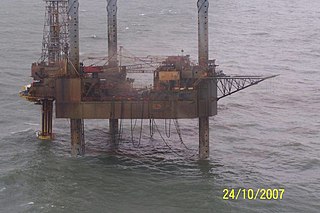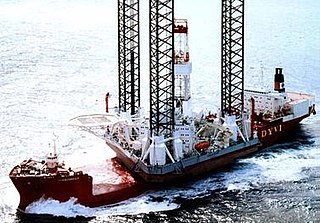 W
WOn 4 December 2015, a deadly fire broke out in the northern part of platform No. 10 at the western section of the Gunashli oilfield operated by SOCAR. The fire started, according to SOCAR, when a high-pressure subsea gas pipeline was damaged in a heavy storm. As a result of the fire, the platform, which had been in service since 1984, partially collapsed. Fire spread to several oil and gas wells. Production at all 28 wells connected to the platform was suspended, pipelines connecting the platform to the shore were closed, and electricity to the platform was cut off. Before the accident, the platform produced 920 tonnes of oil and 1.08 million cubic metres of gas per day. About 60% of the oil produced by SOCAR was transported through this platform.
 W
WIxtoc I was an exploratory oil well being drilled by the semi-submersible drilling rig Sedco 135 in the Bay of Campeche of the Gulf of Mexico, about 100 km (62 mi) northwest of Ciudad del Carmen, Campeche in waters 50 m (164 ft) deep. On 3 June 1979, the well suffered a blowout resulting in one of the largest oil spills in history.
 W
WKab 101 is a Sea Pony-type minimum-facilities light-production oil platform operated by Mexican state-owned oil company PEMEX, and installed about 16 miles (26 km) off the coast of Tabasco, near the port of Dos Bocas, in 1994. The platform was designed by British engineering firm SLP Engineering Limited. The platform also produces the wells Kab 103 and Kab 121. This platform was the site of the accident which eventually led to the death of 22 workers. Pemex would contract two independent studies and one by itself and in an exercise of transparency, post the reports on its website. On October 31, 2008, PEMEX released the result of the independent studies of the accident.
 W
WKolskaya was a jack-up rig operating in the Russian Far East. It was built by Rauma-Repola in Pori, Finland in 1985 and was owned by the Russian company ArktikmorNeftegazRazvedka (AMNGR), a subsidiary of Zarubezhneft.
 W
WKulluk was an ice-strengthened drill barge that was used for oil exploration in the Arctic waters. She was constructed by Mitsui Engineering & Shipbuilding in Japan in 1983 and operated in the Canadian Arctic until 1993 when she was mothballed for over a decade. In 2005, she was purchased and extensively refurbished by Royal Dutch Shell for the drilling operations off the northern coast of Alaska.
 W
WLake Peigneur is a brackish lake in the U.S. state of Louisiana, 1.2 miles north of Delcambre and 9.1 mi (14.6 km) west of New Iberia, near the northernmost tip of Vermilion Bay. With a maximum depth of 200 feet, it is the deepest lake in Louisiana.
 W
WThe Montara oil spill was an oil and gas leak and subsequent slick that took place in the Montara oil field in the Timor Sea, off the northern coast of Western Australia. It is considered one of Australia's worst oil disasters. The slick was released following a blowout from the Montara wellhead platform on 21 August 2009, and continued leaking until 3 November 2009, when the leak was stopped by pumping mud into the well and the wellbore cemented thus "capping" the blowout. The West Atlas rig is owned by the Norwegian-Bermudan Seadrill, and operated by PTTEP Australasia (PTTEPAA), a subsidiary of PTT Exploration and Production (PTTEP) which is in turn a subsidiary of PTT, the Thai state-owned oil and gas company was operating over on adjacent well on the Montara platform. Houston-based Halliburton was involved in cementing the well. The Montara field is located off the Kimberley coast, 250 km (160 mi) north of Truscott airbase, and 690 km (430 mi) west of Darwin. Sixty-nine workers were safely evacuated from the West Atlas jackup drilling rig when the blowout occurred.
 W
WPiper Alpha was an oil platform located in the North Sea approximately 120 miles (190 km) north-east of Aberdeen, Scotland. It was operated by Occidental Petroleum (Caledonia) Limited and began production in 1976, initially as an oil-only platform but later converted to add gas production.
 W
WThe Montara oil spill was an oil and gas leak and subsequent slick that took place in the Montara oil field in the Timor Sea, off the northern coast of Western Australia. It is considered one of Australia's worst oil disasters. The slick was released following a blowout from the Montara wellhead platform on 21 August 2009, and continued leaking until 3 November 2009, when the leak was stopped by pumping mud into the well and the wellbore cemented thus "capping" the blowout. The West Atlas rig is owned by the Norwegian-Bermudan Seadrill, and operated by PTTEP Australasia (PTTEPAA), a subsidiary of PTT Exploration and Production (PTTEP) which is in turn a subsidiary of PTT, the Thai state-owned oil and gas company was operating over on adjacent well on the Montara platform. Houston-based Halliburton was involved in cementing the well. The Montara field is located off the Kimberley coast, 250 km (160 mi) north of Truscott airbase, and 690 km (430 mi) west of Darwin. Sixty-nine workers were safely evacuated from the West Atlas jackup drilling rig when the blowout occurred.